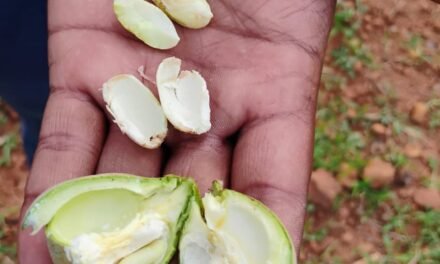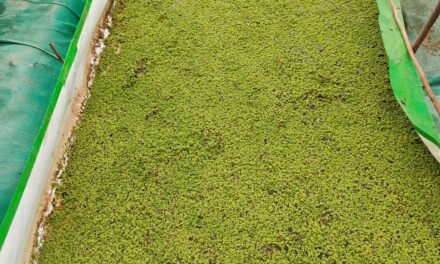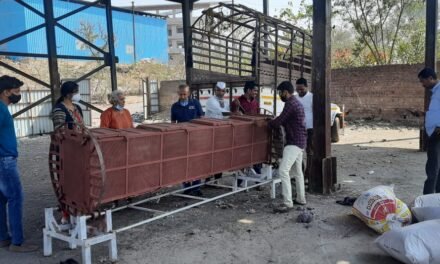Heat Pump Dryer- Its is the device which is use to dry the the vegetables by evaporating the water in it.
10/06/2023
Firstly in the morning there is a interaction with dixit sir. They ask me about my education and some questions about it. We discuss various concepts like relative humidity, refrigiration and heat pump. After that sir told me about the problem in sanitary pad incinerator, on that I suggest some modification in design by changing the positions of the burners. Dixit sir elaborate me about the ongoing projects in DIC like Heat pump dryer, Sand batteries, Inverter.
1.Heat pump – Its is the device which is use to dry the the vegetables by evaporating the water in it.
2.Sand Batteries – “Sand battery” is a high temperature thermal energy storage that uses sand or sand-like materials as its storage medium. It stores energy in sand as heat. Sand is a very effective medium for retaining heat over a long period, storing power for months at a time.
3.Alternator – It is the device which is use to utilize the solar generated electricity directly, with out passing it to MSEB.
So, I choose my project as “Design of Heat Pump Drayer”. I went to the heat pump dryer site for collecting the information.

13/06/2023
Today I studied about the working of heat pump on youtube and ask dixit sir about the working of heat pump dryer during discussion he ask me a question that “If the temperature of room having volume 100m^3 and mass 125kg is 60 degree celsius and another room having same volume and mass have temperature 40 degree celsius, then calculate amount of coal required to raise the temperature of another room from 40 degree celsius to 60 degree celsius”
Solution:-
Given,
Volume of room – 100m^3
Mass of room – 125kg
T1 – 40 degree celsius
T2 – 60 degree celsius
Now, by equation
Q = m * Cp * (T2-T1)
Q = 2500 KJ
We know that calorifc value of coal is 25KJ/Kg
So, 100 kg coal is required to raise the temperature of room from 40 degree celsius to 60 degree celsius.

15/06/2023
At evening I went to Ranjit Sir for knowing the working of actual heat pump dryer present at Vigyan Ashram Campus, In current dryer there there is no proper heat circulation and for heating we are using the heaters which are not desirable, We have to remove that heater. Also during the air circulation there should be external exposure to the air for the taking heat from the atmosphere.

We discuss about the components in the HPD.
1.Compressor – a machine used to supply air or other gas at increased pressure, e.g. to power a gas turbine.
2.Radiator – piece of equipment that is usually fixed to the wall and is used for heating a room. Radiators are made of metal and filled with hot water
3.Suction pipe – Used to circulate air in HPD.
4.Cointainer – Use to store the material we have to dry.
16/06/2023
Task-
Today we started the design of flat bed dryer, in which we have to design the part of dryer and also the the bill of material , So firstly we took the the dimension of the flat bed dryer and after that draw the sketches of the each and every part, also design the process flow diagram and material flow diagram with the BOM
Following is the CAD Assembly of dryer.

17/06/2023
Today we went to Chakan for carry two electric rickshaw to Vigyan Ashram for the repairing purpose, after that we started work on the electric rickshaw, we disassemble the batteries to check whether they are working or not and also observe there are some mechanical problems also.
At Evening we open the evaporator of the heat pump dryer for better understanding of the system and talk about required changes in the HPD
18/06/2023
Today we talk about the heat pump dryer with the Shubham and Rishikesh sir they both guide us about the project, there is discussion about the required system of heat pump dryer, We talk about the refrigerant and Air circuits in HPD. Also they suggested some changes in the HPD.
Current working of HPD-
This is the block diagram of current working of working of the HPD.

Working-
1.Compressor compress the refrigerant inside it which reduce the volume and increase the temperature of the refrigerant.
2.After compression refrigerant get pressurized and travel into the pipes of the radiator behind the container.
3.Before entering to pipes of radiator there is an expansion valve which expand the refrigerant which increase the volume and decrease the temperature of the refrigerant.
4.In radiator there is a atmospheric air which exchange the heat with the refrigerant and get cold.
5.After that cold air get into the container and that cold air is heated by the external electric heaters, which are not the desirable condition.
So, to remove that external heaters we have to heat air with the help of high temperature of the refrigerant.
We want around 50-55 Degree Celsius air into the container to dry the vegetables.
But inlet air temperature is 17 Degree Celsius.
So, from 17 degree celsius to 50 degree celsius we have to achieve the large delta.
To reduce this difference we have to convert this 17 Degree Celsius air into atmospheric temperature, we have to design the heat exchanger.
21/06/2023
In previous HPD the temperature of Air coming from the Cooling Coil is less than the atmosphere temperature, so we have to convert it into the normal atmospheric temperature with the help of the heat exchanger and for design of heat exchange I read the ASME section 8 Division 1, ASME section 8 Division 2 and TEMA (Tubular Exchanger Manufacturers Association)
For design we have to find
1.Material of the pipes
2.Diameter of the tubes
3.Number of Turns
4.Length of the pipes
24/06/2023
To use the heat of refrigerant which in the radiator we have to design and manufacture insulated box in which we have to place radiator. In this box there is a Air at atmospheric temperature, which we have to heat at 55 degree celsius for the draying of the vegetables.
For insulation purpose we have to FRP
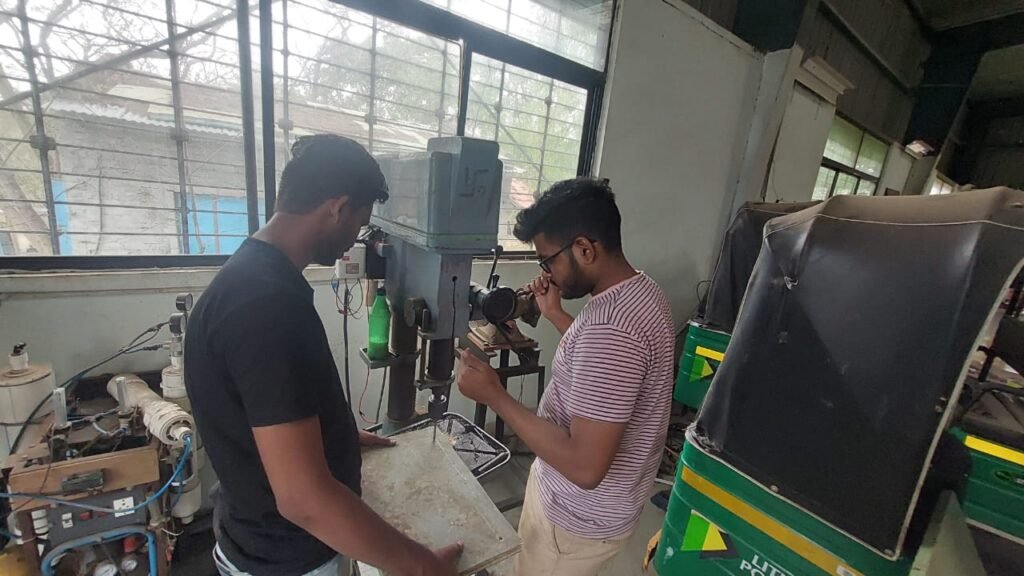
26/06/2023
we have taken temperature readings from a present heat pump dryer to get assumptions in designing the heat exchanger.
From this readings we get the inlet temperature for a required heat exchanger is about 10 degree Celsius and outlet needed is 30-35 degree Celsius accordingly we need to design heat exchanger
17/07/2023
Today brainstorming session happen with presence of all DIC members, The topic we discuss was Heat Exchanger.
We discuss on topic like heat duty, overall heat transfer rate, temperature difference
But for all the calculations we are just assuming values which not an appropriate way.
So, For some data collection we decide to go for trial of heat exchanger.
For that we are using Aluminium pipe of one metre which going to inclose in plastic pipe with hot water.
Details are in next blogs.
26/07/2023
Now it is concluded that for trial we have to design an mini heat exchanger.
Components of heat exchanger are Aluminium pipe and plastic pipe shell.
From Aluminium pipe we have to pass a cold air whos temperature is around 17-18 degree celsius.
And from the plastic pipe there is a hot water which going to exchange heat with the air in the Aluminium pipe to raise its temperature.
For that purpose we have to design heat reducer because the air inlet of the container have diameter 12 cm meter and Aluminium pipe have diameter 2.2 cm.
We design this on the Solidworks and fabricate with the help of 3D printer.


27/07/2023
Today we start the fabrication of mini heat exchanger.

Inclosed the plastic pipe with the help of caps and insert the Aluminium pipe within.
and seal all the system.
28/07/2023 – 30/07/2023
Preparation of the Open House Exhibition.
01/08/2023
After fabrication of the mini heat exchanger, installation of heat exchanger takes place.
At the air inlet of the container we place the mini heat exchanger and seal it.
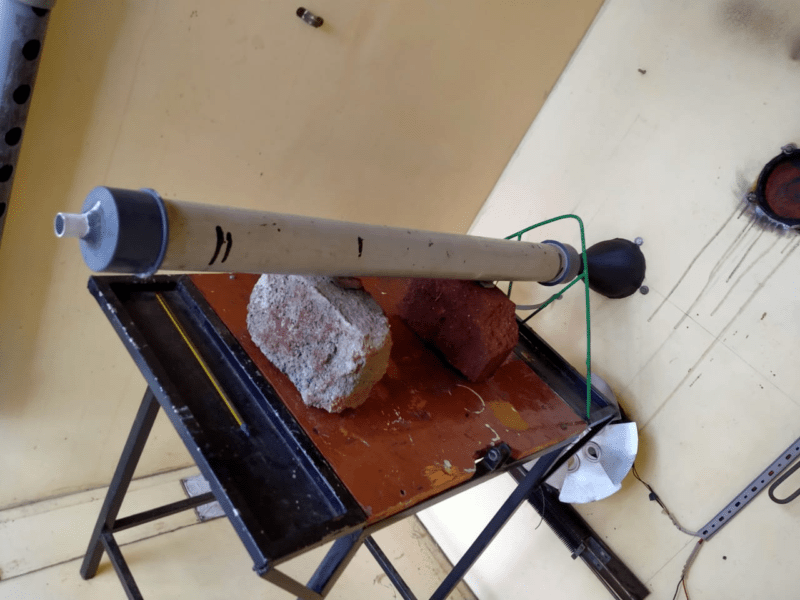
02/08/2023
So for the data collection we perform the experiment as follows.
1.Fill the outer shell which is plastic pipe with the hot water with temperature 58 Degree Celcius.
2.Start the system and measure the initial temperature of the air inlet which is 18 Degree Celcius.
3.After 10 minutes the temperature of the water in shell goes down Upto 38 Degree Celcius.
4.And air outlet temperature increases upto 29 degree Celcius.
So, results of the experiment are as excepted
Hot water exchange heat with the cold air.
04/08/2023
Because of the the dropping temperature of the water constant heat exchange is not possible so,
We have to circulate the water inside the shell.
So, because of that we create the circulation of hot water with the help of submersible pump.
We use steel container for heating of the water with the help of induction and place pump inside it.
Readings of the experiment are as follows.


05/08/2023
After 1st trail of heat exchanger.
We observe that because of the variable water inlet temperature, the outlet temperature of the air inlet is also variable.
So, We decide to keep water inlet temperature constant by turning induction on and off.
This are the reading of the trial.
After trial we clearly observed that outlet temperature of air is almost constant.



